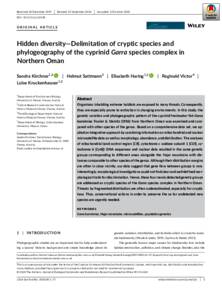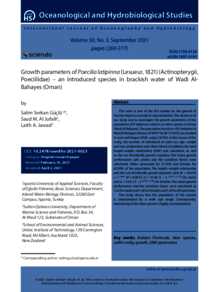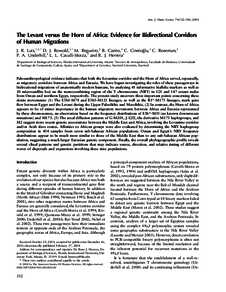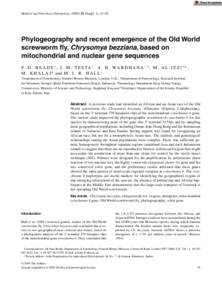Document
Hidden diversity—delimitation of cryptic species and phylogeography of the cyprinid Garra species complex in northern Oman.
Identifier
DOI: 10.1111/jzs.12438
Source
Journal of Zoological Systematics and Evolutionary Research. v. 59, 2, p. 411-427
Contributors
Sattmann, Helmut., Author
Haring, Elisabeth., Author
Victor, Reginald., Author
Kruckenhauser, Luise., Author
Country
United Kingdom.
Publisher
Blackwell Publishing Ltd.
Gregorian
2021-02-01
Language
English
English abstract
Organisms inhabiting extreme habitats are exposed to many threats. Consequently, they are especially prone to extinction in changing environments. In this study, the genetic variation and phylogeographic pattern of the cyprinid freshwater fish Garra barreimiae Fowler & Steinitz (1956) from Northern Oman was examined and compared with other species of the genus. Based on a comprehensive data set, we applied an integrative approach by combining information on mitochondrial and nuclear microsatellite data as well as morphology, abundance, and distribution. The analyses of mitochondrial (and control region [CR], cytochrome c oxidase subunit 1 [COI], cytochrome b [Cytb]) DNA sequences and nuclear data resulted in the same genetic groups corresponding to different areas alongside the Hajar mountains with distances comparable to other species of the genus. Although their distribution margins are often in close vicinity, our data suggest that gene flow between groups is rare. Interestingly, morphological investigations could not find clear and well-defined morphological traits for discrimination. Hence, these four newly detected genetic groups are addressed as cryptic species of the Garra species complex in Northern Oman. Threats by fragmented distribution are often underestimated, especially for cryptic taxa. Thus, conservational actions in order to preserve the so far undetected new species are urgently needed.
ISSN
0947-5745
Category
Journal articles




